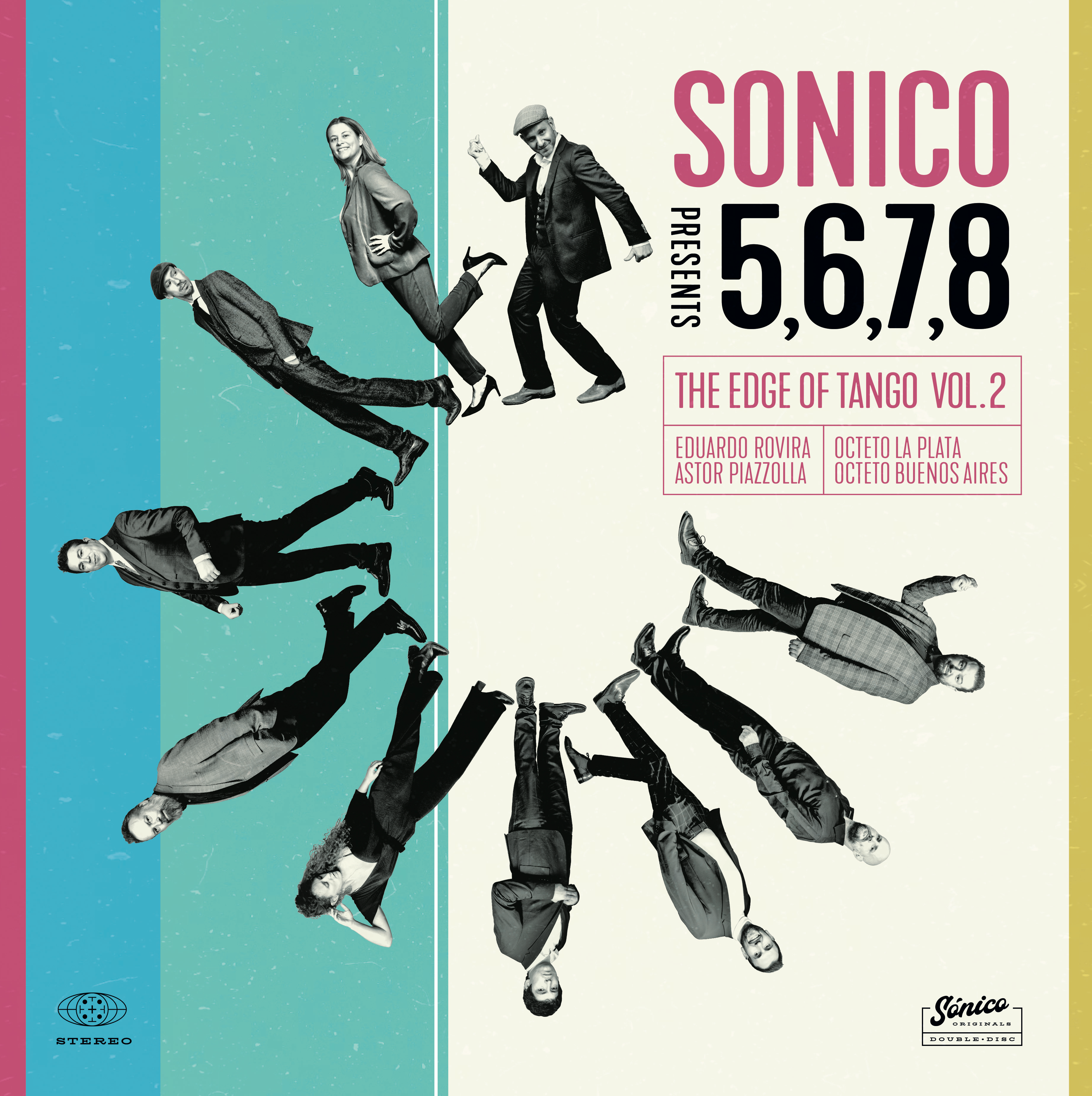The 1950s saw enormous changes in popular music. In the US, rock and roll displaced an enormous number of popular genres, from yodelling to ballads. Outside the US, rock and roll also shifted local music off the stage. In Argentina, which had a long dance-hall tradition, tango was moved into a minor role. Ballroom dance died by being no longer important to the young.
While this was going on, Astor Piazzolla had been trying to get tango off the popular stage and onto the concert stage. His tangos were not danceable and were intended for passive listening by an audience seated in their chairs or had to be choreographed. This caused a great furore in Buenos Aires and, by the 1960s, was a large reason that Piazzolla’s career largely happened in Europe and not South America.
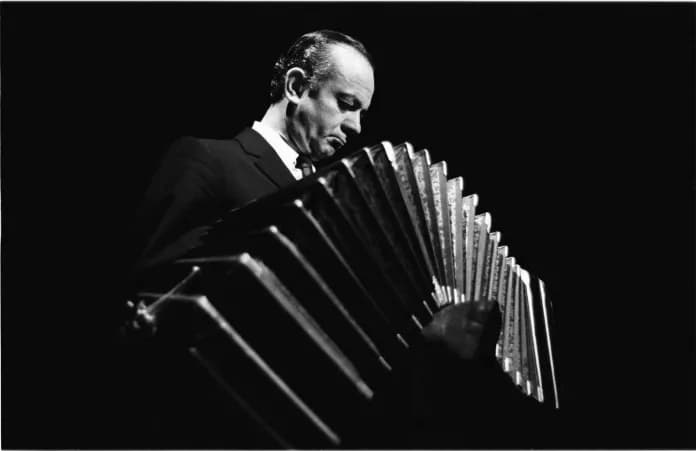
Astor Piazzola, 1968
Another Argentinian and bandoneonist, Eduardo Rovira (1925–1980), had the same idea. He also wanted to classicise the tango and started writing music that had a more classical side. In 1968, his album Sonico, brought the modern idea of electronic distortion to the bandoneon. Both Piazzolla and Rovira created tango suites, a new concept that worked well with the classical idea of dance.
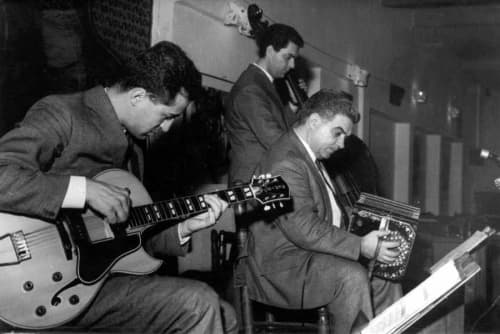
Rovia Trio
The Belgian ensemble Sonico, which takes its name from Rovira’s 1968 album, has gone back to examine Rovira’s role in the change in tango. After Rovira’s death at age 55 in 1980, his music nearly vanished. The creation of Sonico in 2015 led to the issuing of now 4 albums of Rovira’s music: Eduardo Rovira: La Otra Vanguardia in 2018, Eduardo Rovira: Inédito e Inconcluso in 2020, Piazzolla-Rovira: The Edge of Tango in 2021, and now Five, Six, Seven, Eight… The Edge of Tango Vol. 2 in 2023. The most ground-breaking of their albums was their second, Inédito e Inconcluso, which located music from Rovira’s last recording from 1976 that was never edited or released, recovering music for 14 compositions from both manuscripts and non-commercial recordings.
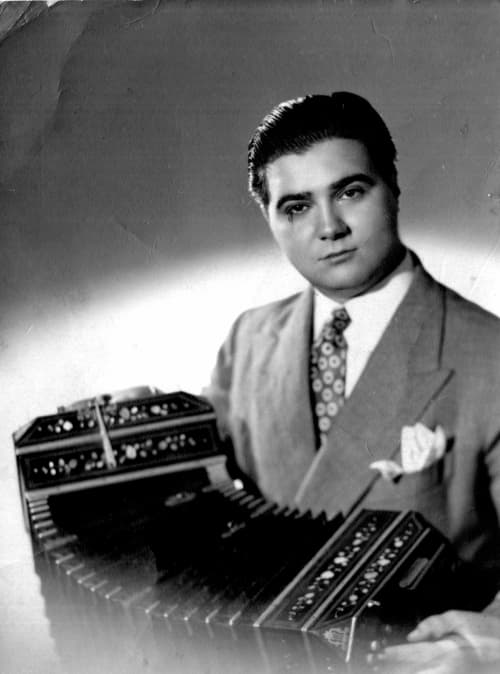
Eduardo Rovira
Sonico’s 2023 album, Five, Six, Seven, Eight… The Edge of Tango Vol. 2, adds a video dimension based on the ensemble’s work with the choreographer Lisi Estarás. At one period in Rovira’s life, he was stranded in Europe, his ensemble had split up, and he was reduced to working in a circus as a bandoneon player – the circus aspect is played up for these dance videos, emphasizing both the loneliness of Rovira’s avant-garde style and the inherent loneliness of the clown.
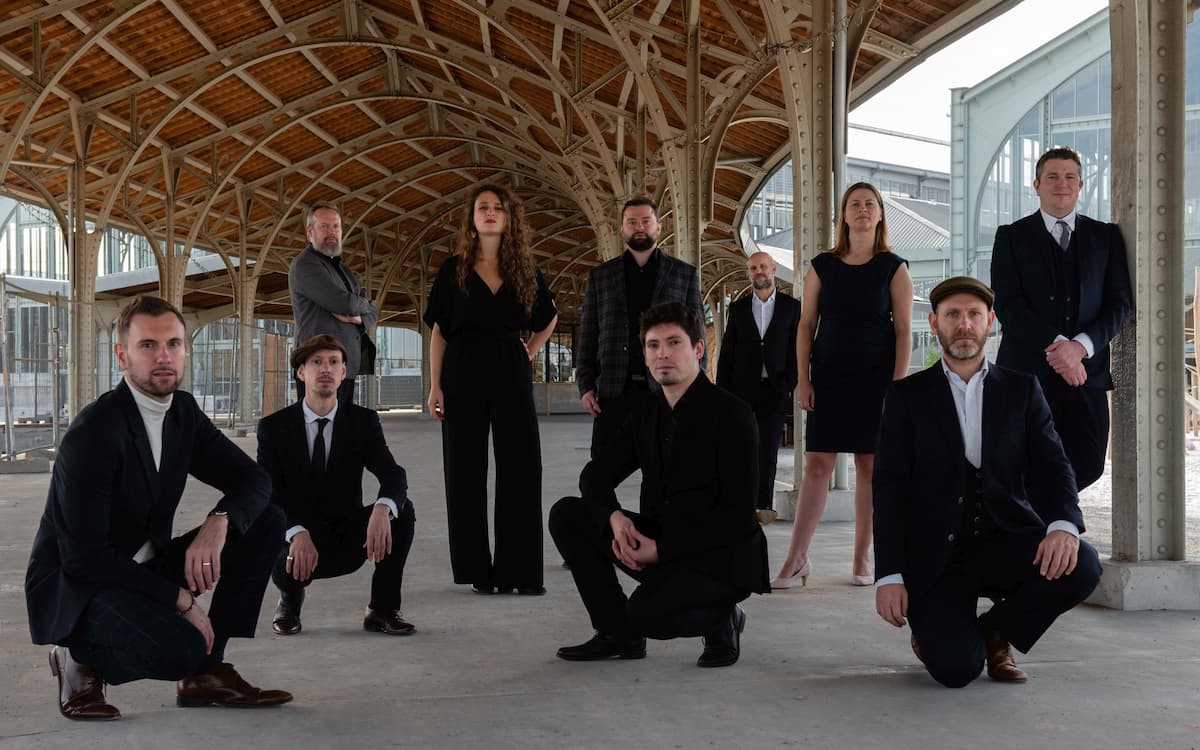
Sonico (Photo by Griet De Cort)
So, what does the music sound like? It’s interesting to hear another composer in the tango field who isn’t Piazzolla. In his work Hombre Tango, it isn’t what we’re used to from Piazzolla. Where Piazzolla linked his work with dance, Rovira linked his with literature and painting as well as dance. For both composers, tango was a show rather than a personal dance.
Eduardo Rovira: 𝗖𝗜𝗨𝗗𝗔𝗗 𝗧𝗔𝗡𝗚𝗢
The longest work on the recording is Astor Piazzolla’s Tango Ballet originally recorded by his Octeto Buenos Aires. The work was written for a short film by the choreographer Paulna Ossona, but it had a greater success when it was staged at the Facultad de Derecho de la UBA on 31 October 1956. The work was never commercially recorded and has only been recovered from an audio recording donated to the Instituto Nacionale de Musicología Carlos Vega. A month after that premiere, the work was given again with the Compañía de Danza Contemporéana, with choreography by Delfy Kaplan and Sara Pardo as part of a larger show entitled Ciudad, Ciudad. As much as we said that Rovira doesn’t sound like the Piazzolla we know from Libertango and Adios nonino, and other familiar works, this Piazzolla sounds unfamiliar as well.
The Ensemble says: Instead of trying to create a controversy between Piazzolla and Rovira, SONICO wants to share the wonderful period known as avant-garde tango with the public. Although Eduardo Rovira and Astor Piazzolla employed different approaches to renewing tango music, they both worked tirelessly to free the music from traditionalism. Their actions had lasting effects on the history of the genre, and even today, we can consider their creations to be some of the most interesting music ever produced in Argentina.
As another proponent of the ‘tango nuevo’ style we associate solely with Piazzolla, the ensemble Sonico has given us many reasons now to broaden that style to include Eduardo Rovira and to use his music to change the way we think about Piazzolla and the modern tango.
For more of the best in classical music, sign up for our E-Newsletter

